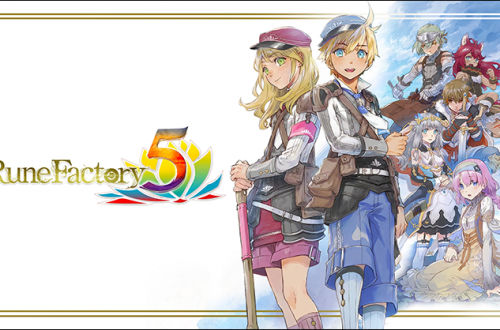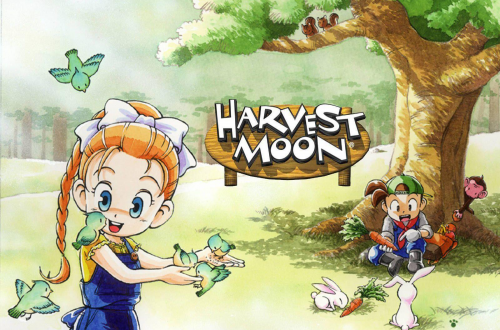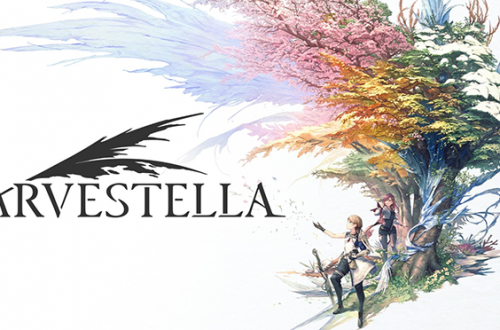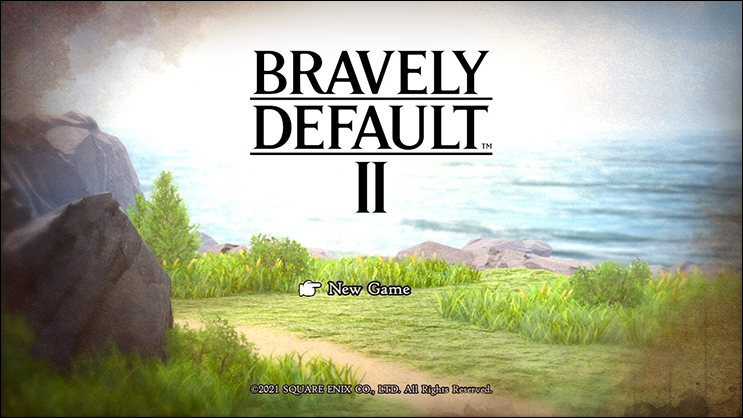
Bravely Default 2: You Won’t Want to Put it Down
Time to take off work and hole yourself up with Mt. Dew and pizza for a week—you won’t want to put this game down once you have your hands on it, because the story (and the gameplay) are actually that good. But if you don’t want to take my word for it, I’ve went into more detail below in my review of Bravely Default 2.
If you’re afraid of spoilers, stop here. ✋? There are spoilers (from parts of the demo) in this review.
You begin the game as a young sailor who has washed up on Halycon’s shore, somewhat affected by amnesia, with no personal belongings of your own. All you know is your name. You wake up in a nearby Inn and you can’t recollect anything that has happened to you, all you know is your ship wrecked and everyone on board is, as far as you know, dead. You don’t have much of a purpose except discovering what happened to you and your crew, but before you know it, you meet your team and you set out on a new quest, your shipwrecked crew entirely forgotten.
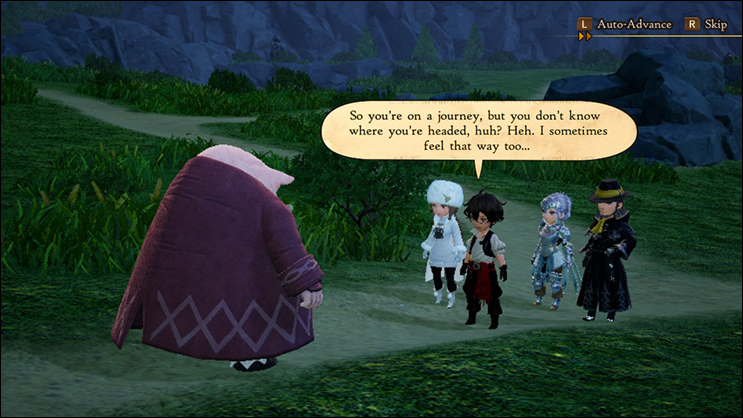
Returning players from the first demo that launched in March 2020 will immediately notice some elements which were rougher in the first demo and which the developers changed or enhanced prior to the game’s release. We all had some opinions that were definitely heard by and addressed by the Bravely Default 2 team. Honestly, I wish more feedback were addressed in this way. Seeing the response from the developers gave me a lot of hope for this new game, and I gotta say, they really delivered (you can read the Twitter post here).
Bravely Default 2: New and Returning Features
For starters, there are now three difficulty options—Casual, Normal, and Hard—and you can switch between them at any time from the Settings menu. The talking head portions of the story no longer have those unnecessary black bars (letterboxing), and there are many helpful hints to adjust players to the unique JRPG combat of the Bravely series (suck it up kids, they deliberately made combat difficult).
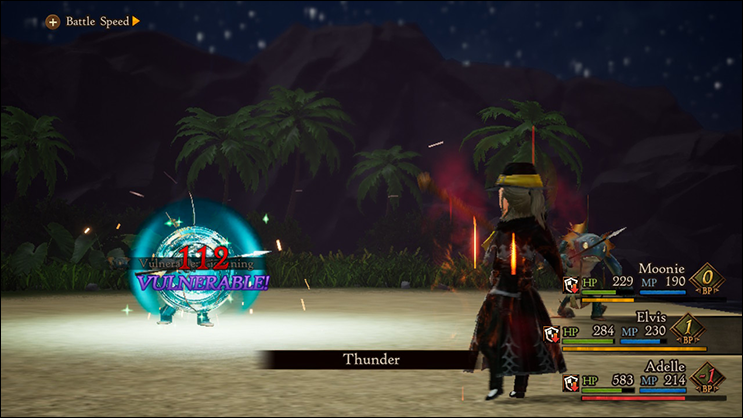
One of the sample comments taken from the demo were “One slip-up, and even the goblins can wipe me out!” I’ve gotten wiped out from monsters when first arriving in a new dungeon because I didn’t know what I was getting into/how to properly prepare, but if I left the dungeon and leveled up a little outside and geared up at the city, I’d usually be fine going back in. Some players might despise the grind, but I enjoyed it, and I thoroughly enjoyed the challenge that the combat system implemented. If I knew what I was getting into, the game wouldn’t feel as challenging nor as rewarding, so I welcomed the level of difficulty that normal mode gave me (I’m too scared to set it to hard mode!) With that being said, you can’t rotate the camera inside dungeons, and I found that to be rather annoying. If there are hidden rooms like there was in Bravely Default 1, I wasn’t patient enough to go looking for them.

Now I know some gamers absolutely despise turn-based combat, but it’s something I grew up with and I found the turn-based combat in this game to be nothing short of extraordinary and incredibly refreshing. Unlike it’s predecessor, Bravely Default 2 really forces you to take into account your party’s strengths and weaknesses—every move counts—one slip-up and you can find your party completely wiped out. Quite literally, I won several boss battles just by defending and playing the waiting game— the boss’s MP would eventually be reduced to 0, and then I could go ham when the boss could no longer counter my attacks with abilities or spells. Going in with guns blazing just isn’t the answer in most cases; patience is a virtue, after all. Your team and the way you begin a boss battle can greatly impact the difficulty of the battle and the outcome. I found myself fighting a boss and then reloading because the knowledge I gained within the first two minutes of the fight made it immeasurably easier.
Turn-based JRPGs are definitely one of my most beloved genre of game, and the combat relies less on reflexes and more on strategy—a perfect combination, in my opinion. In turn-based games, you and the AI will get a turn to act, and without reflexes involved it becomes a purely strategic game, so I’m really a major, new turn-based game was released so soon after Fire Emblem: Three Houses. Moving on… the re-introduction of the Brave and Default system brought back a lot of fond memories, and because the level of difficulty has been amped-up, it’s really made combat more enjoyable, especially as you’re playing and choosing when to save up your Brave Points (BP) or expend them all use them in one turn after using the Default combat-move. If you don’t have enough BP saved up, you could go into the negatives, but once you do so your character is unable to move for several turns until their BP is restored to 0.
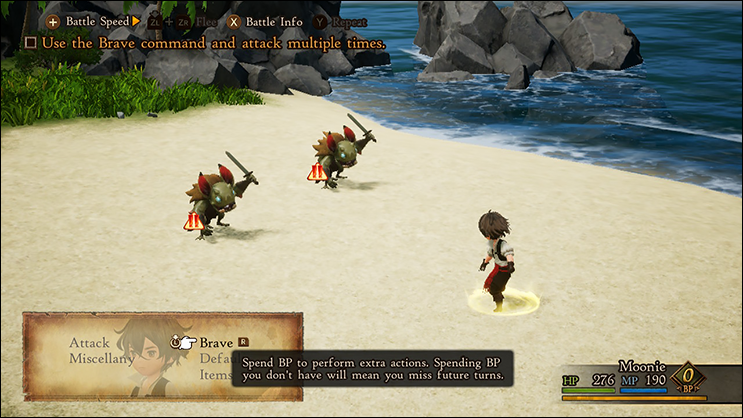
You could, for example, save up BP to string together a chain of up to four moves when you’re in a tough bind—use a Phoenix Down on a fallen party member, use a Potion or healing spell to restore their HP, and then attack the enemy twice. There are so many different combinations that you can use, it’s worth mentioning however that expending all of your BP at once may not always be the best idea. Some fights I would immediately go into the negative BP bank by attacking all at once to wipe out the enemy, and sometimes this would work in my favor, but there were other times where I’d leave one enemy left with 2 HP and I’d have to wait for my BP to be restored, all the while watching this lone monster with 2 HP whittle down the health of my party and there was nothing I could do about it until my characters restored enough BP to act. It’s worth bearing in mind the risks if your gamble doesn’t pay off.

Leveling in this game isn’t too difficult though, and you’ll find yourself over-leveled fairly quickly since the monsters spawn on-screen as you’re traversing through the open world and dungeon crawling. If you’ve got an active Nintendo Switch Online subscription, you can take advantage of a new feature called the Exploration Voyage. One you’ve unlocked this, try keeping the game open and setting your Nintendo Switch in sleep mode for a while. You’ll come back to dozen of goodies such as EXP Boosts and JP Boosts—so if you’re finding yourself short on time, just pop some of these and you’ll catch right up instead of grinding your time away in-game.
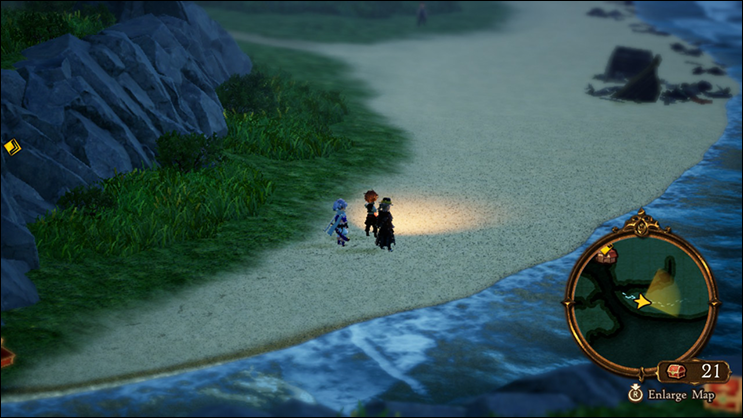
The open map has a day/night system, and when the sun sets, battles can get pretty rough. If you want an extra challenge, travel at night and use some of the new monster treats found in your inventory. Monsters will spawn and chain several battles together (you’ll get an enormous EXP and JP boost from winning chained battles), making it easy to grind EXP and JP outside of a dungeon. You can also save your game and use tents anywhere on the open map, making it easy to grind to your hearts content.
Dungeon crawling felt so much more engaging and alive in Bravely Default 2, but every once in a while I’d use a warding light to keep enemies away because I felt like I was too over-leveled or I was rushing to find a checkpoint to use a tent to recover my health and mana. I imagine in hard-mode difficulty I would use them a lot more often, as I ran out of mana fairly quickly after just a few battles and I would burn through my mana-recovery items and then I wouldn’t have mana to heal… it could be a mess at times, but the Bravely Default series has always made dungeon crawling feel like a time-consuming effort, and I was okay with it. I can see why some players would find it tedious and just pop several ward lights to get to the end of a dungeon just to progress the story.
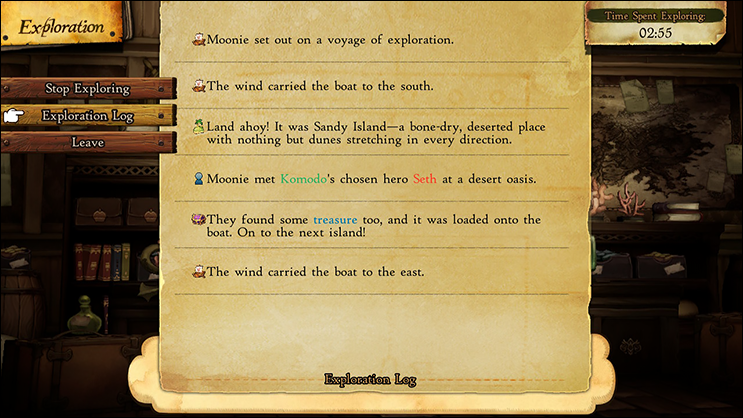
After you win a battle, you’ll earn some experience points (EXP), job points (JP), pg (currency) and loot. Bravely Default 2 has a ton of familiar jobs that every JRPG fan will recognize from the Bravely Default series—Freelancer, White Mage, Black Mage—but there are some new ones too, and unlike Bravely Default 1, you can see what new abilities can be learned as you level up your character in that class. Also, to make things easier, the interface of the jobs/abilities system is incredibly easier to read and comprehend—this time the game will ask you if you want to set a job as your main job or sub-job, thank goodness.
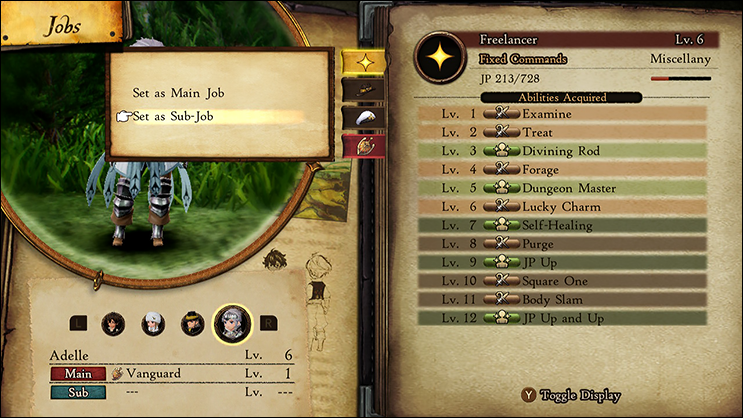
Did I mentioned the game is absolutely stunning? I realized pretty quickly that playing in Bravely Default 2 in handheld mode probably wasn’t the best decision; the battery dies fairly quickly and there can be slight lag if you’re battery is close to 0. The quality is better in docked mode, which is the case with most games when you switch from handheld to docked mode, but overall there’s no mistaking it, this game is simply beautiful and the art style is greatly appreciated. When I first arrived in Savalon, the same city you begin in the demo, I was mesmerized by the colors and richness despite it being a desert city (and I usually hate traversing through desert climates in JRPGs!)
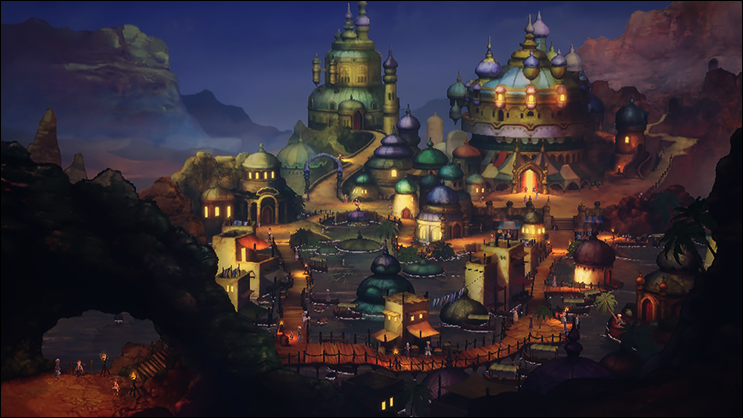
When your party of Seth, Princess Gloria, Elvis, and Adelle arrives in Savalon, you’ll be introduced to the four primary NPCs of this chapter. Prince Castor, the de-facto ruler of the city, who seems to have a real problem with people from a lower birthright. Bernard, the casual racist and obvious villain for this portion of the game, and at his side are Annihal, a beastmaster, and Orpheus, a bard who has a history with Gloria.
Orpheus is actually your first target for the demo, leading returning players back to the ruins they traversed once before. Not only do you need information from him, but he’s holding an Asterisk, which grants you the job of Bard once he’s defeated. This time around, you’re not on a strict mission to retrieve every Asterisk just for the sake of taking them away from the enemy, and the game doesn’t stress you to seek them out either, which I found refreshing. There was a distinct linearity between Asterisk-hunting and main story progress in Bravely Default 1 that caused the game to sometimes feel linear (for lack of a better word) and boring. In Bravely Default 2, finding Asterisks just sorta… happens, and it was a nice change.
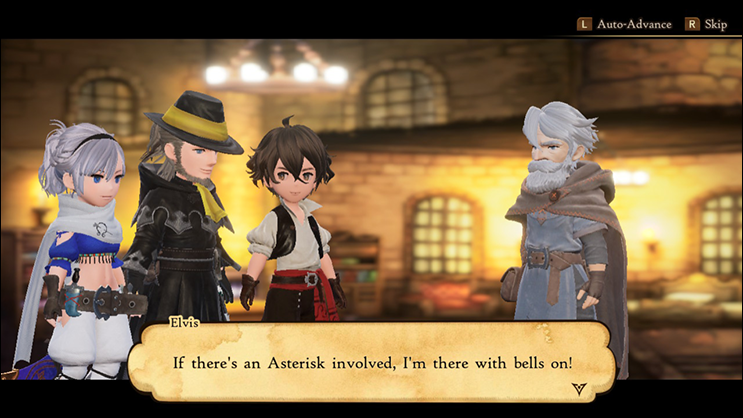
Over 10 hours into the gameplay, the characters are in-depth and incredible; the story-creators really hit it out of the park with character development in Bravely Default 2. I haven’t felt this attached to the characters in quite some time, even if it is a “hero story” (and I guess in a way, we’ve heard it all before); but I don’t care, their purpose makes sense to me, and I care about finishing the story through, too. I’m rooting for them. You’ll find yourself rooting for them, too.
The Good: Turn-based combat system is challenging and features dozens of new strategic options depending upon the set-up of the jobs you have equipped; the story makes the grind worth it, and you’ll find yourself devouring every bit of it.
The Bad: At times, I found myself squinting at the Nintendo Switch screen because the pixels were so small and hard to see, especially when dungeon crawling. The detail and text was hard to read at times on the small screen, and not being able to rotate the camera made looking for treasure chests tedious.
Conclusion: If you’re looking for a new JRPG to sink several hours into, look no further than Bravely Default 2. If you love JRPGs, you would be a fool to not pick up this game.
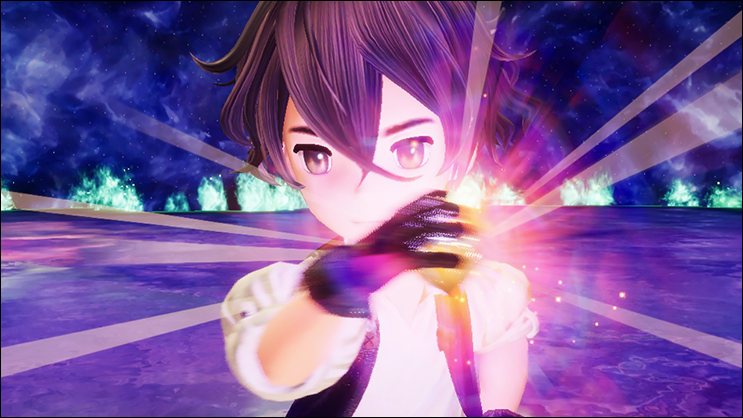
Be sure to check out more of my game reviews here and follow me on Twitter to get notifications on my published articles! ♥♡


